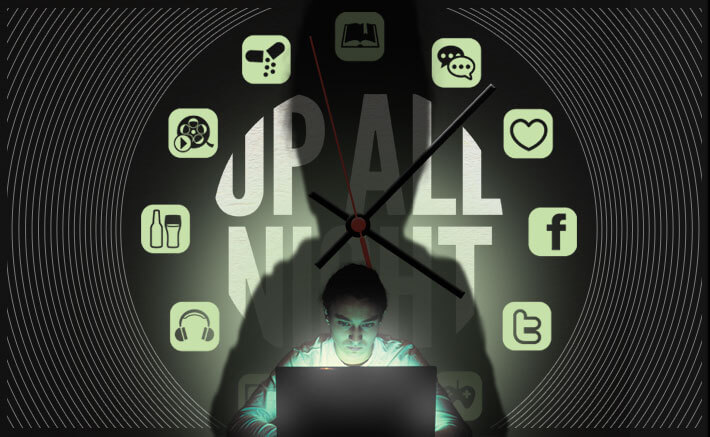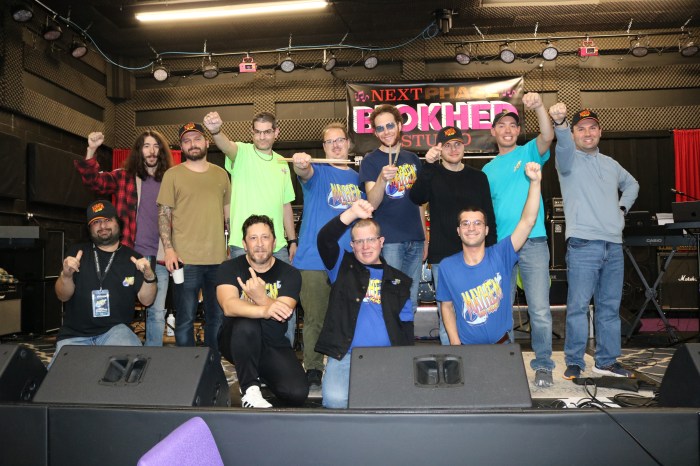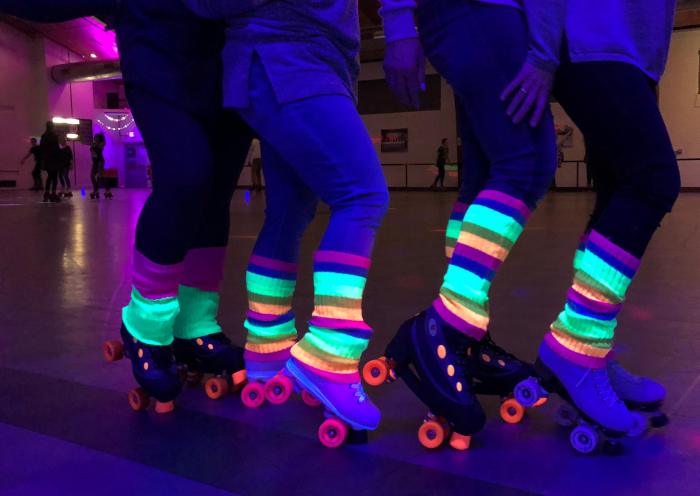HIGHER LEARNING
In March, Mike “The Situation” Sorrentino of Jersey Shore, admitted himself to rehab, reportedly from drug addiction that spiraled out of control from using cocaine to stay awake and then using Xanax and Ambien to fall asleep—a ritual of alternating between stimulants and sedatives, common to those juggling work or school commitments and a late-night social schedule, and one that has been associated to a higher risk of illicit drug addiction.
Ashley says she and many of her high school friends will drink coffee to stay up late and again to be alert for early morning class. And on college campuses where late nights and all-nighters are a regular thing, abusing prescription drugs to focus on last-minute cramming sessions is nothing new.
“Everyone takes Adderall in college,” adds Jeremy. “It’s pretty widely available.”
Adderall, a stimulant drug often prescribed for those with Attention Deficit Disorder, is cheap, with each pill costing about as much as a venti latte at Starbucks. Considered one of the most commonly abused prescriptions by college students, 6.4 percent of full-time students use it, according to the U.S. Department of Health and Human Services, with higher rates at more competitive universities.
Jeremy says one of his roommates who was trying to balance pledging for a fraternity with the academic demands of his freshman year of college would regularly take prescription drugs, including Adderall, known as a “smart drug” with effects similar to cocaine, to get through his busy days.
“Because he was consistently drinking and partying the only way to stop drinking and partying all the time was to take Adderall and focus for hours at a time,” Jeremy says, adding that on other days he would often find his roommate asleep on the couch as he was leaving for morning classes and he would still be there sleeping when he got back at 7 p.m.
Recreational drug and alcohol use go hand in hand with academic-related drug use, according to the National Survey on Drug Use and Health, which found nearly 90 percent of the full-time college students who had used unprescribed Adderall academically were also binge or heavy alcohol drinkers. They were also eight times more likely to use cocaine. Both drugs carry a risk of heart attack, stroke, psychosis and sudden death.
But while Ashley, who has no plans of cutting anything from her schedule just yet, says she’ll continue staying up late “naturally” using coffee as her only stimulant, Jeremy has overhauled his schedule and his sleeping habits.
“It didn’t happen immediately,” he says. “I would just stare at the ceiling if I tried to go to sleep at 10, so I gradually started going to sleep five to 10 minutes earlier than I had been each night.”
Currently in his sophomore year, Jeremy’s grades have improved—and so has his sleeping. He takes later classes now, shuts off his computer and phone at night and doesn’t go to sleep past midnight during the week or 2 a.m. on weekends.
Now an A and B student, Jeremy keeps his extracurriculars within reason, taking on the occasional extra-credit project and writing for the school paper, but he makes sure he has down time during the day to avoid those late nights.
“It took a year, but it was worth not being tired all the time,” he says. “You don’t have to worry about being tired in class because you’ve gotten enough sleep.”
Some of his roommates are still taking Adderall, partying during the week and sticking to their late-night routines, regardless of the risks.
Even Jeremy admits he still watches the sun come up every now and then, just not on the regular basis he did before.
And there still are those nights when all six of them will pull an all-nighter for absolutely no reason—seeing who can get the ball in the cup from the other side of the room, jumping in the school fountain at midnight because their team won or because they know they only have two more years of spring breaks and summer vacations.
Or just because they can.































